The Essential Guide to Typography: How to Make Your Custom Designs Stand Out

In graphic design, typography plays a vital role in conveying the intended message, evoking emotions, and setting the overall tone for any design. Mastering the art of typography can elevate your custom designs, ensuring they stand out from the crowd.
Understanding Custom Typography
Custom typography refers to creating unique typefaces and fonts to cater to individual projects or brands. By creating a custom typeface, designers can tailor the font to their project's specific needs and aesthetics.
Custom typography is crucial for branding and identity, as it sets a brand apart from its competitors and communicates its personality and values.
Embracing Typography Trends
Staying updated with the latest typography trends is essential for designers looking to make their work stand out. These trends can range from bold and daring to minimalist and elegant. Some popular typography trends include:
-
Hand-drawn typefaces
These fonts give a personal touch to designs and evoke a sense of authenticity.
-
Variable fonts
These fonts offer a wide range of weights and styles within a single file, allowing designers to create more versatile designs.
-
Retro and vintage styles
Nostalgic designs have returned, with designers reviving typefaces from past eras to create a distinctive look.
-
Futuristic fonts
Experimenting with geometric shapes and modern forms can produce innovative typefaces that feel fresh and cutting-edge.
Personalized Typography

Personalized typography takes custom typography further by tailoring the design to an individual or event. This could be through monograms, initials, or incorporating unique elements representing the person or occasion. Personalized typography is perfect for invitations, logos, and personal branding, as it adds a unique and memorable touch to the design.
Typography Art Prints
Typography art prints are a popular way to incorporate typography into home and office décor. By combining creative typography with striking visuals or inspiring quotes, designers can create eye-catching pieces of art that add character and flair to any space.
Typography art prints can be sold as limited-edition pieces or made available as digital downloads, offering designers another avenue to showcase their work.
Print Typography
While digital design dominates the modern world, print typography is still an essential skill for designers. Understanding the nuances of print typography, such as kerning, leading, and tracking, can enhance printed materials' readability and visual appeal.
Knowing how different paper types and printing techniques can affect the appearance of typography is crucial for creating designs that translate well from screen to print.
Custom Font Design
Custom font design allows designers to create typefaces that truly reflect a project's intended message and aesthetic. When designing a custom font, consider the following:
-
Purpose
Identify the primary purpose of the font, whether it's for branding, print materials, or digital design. This will guide your design decisions and ensure the font is suitable for its intended use.
-
Readability
Prioritize readability when designing custom fonts. Choose letterforms that are easily distinguishable from one another and ensure proper spacing and kerning.
-
Consistency
Ensure your font design maintains a consistent style and feel across all characters, including punctuation and special characters.
Customized Typography

Customized typography blends elements of custom typography and personalized typography to create designs tailored to specific projects, brands, or individuals. This could involve adapting an existing typeface to include unique elements or combining different typefaces and styles to create a cohesive design. Customized typography can be used for various applications, including logos, packaging, and editorial design.
The Importance of Hierarchy in Typography
Establishing a clear hierarchy in your typographic design is crucial for guiding the viewer's eye and making your content easily digestible. To create a strong hierarchy, consider using a combination of font sizes, weights, and styles to distinguish different levels of information. e.g. use a bold, large font for headlines, a medium-weight font for subheadings, and a lighter, smaller font for body text.
Balancing Readability and Aesthetics
While creating visually captivating designs is essential, readability should always be maintained. Ensure your typography is easy to read by paying attention to font size, line spacing, and color contrast.
Also, choose legible and appropriate fonts for the context in which they will be used. For instance, avoid using overly decorative fonts for body text, as they can be difficult to read in large blocks.
Exploring Font Pairings
Combining different fonts can add visual interest and variety to your designs. When pairing fonts, consider the following tips:
-
Contrast
Choose fonts that contrast in weight, style, or size to create a dynamic design that doesn't feel monotonous.
-
Harmony
Ensure the fonts you choose complement each other and share similar characteristics, such as x-height or stroke width.
-
Limit your choices
Use only a few fonts in a single design, as this can make your design feel cluttered and unfocused. Aim for up to two or three fonts per design.
Mastering Kerning, Leading, and Tracking
Fine-tuning the spacing between characters and lines is essential for creating polished and professional typography. Consider these elements:
-
Kerning
Adjust the space between individual characters to improve your text's visual balance and legibility.
-
Leading
Modify the space between lines of text to enhance readability and create a comfortable reading experience.
-
Tracking
Adjust the spacing between characters in a text block to achieve a consistent density and visual rhythm.
Experimenting with Typography Techniques
Feel free to experiment with different typography techniques to make your custom designs stand out. Some ideas to explore include the following:
-
Hand-lettering
Create one-of-a-kind letterforms by drawing them by hand or using a tablet and stylus.
-
3D typography
Add depth and dimension to your designs by incorporating 3D elements or effects.
-
Textures and patterns
Integrate textures or patterns into your typography for a more tactile and visually engaging design.
-
Layering and masking
Using layering and masking techniques to combine typography with images creates unique and captivating designs.
Staying Inspired and Challenging Yourself
Continually seeking inspiration and pushing your creative boundaries is essential for growth as a designer. Stay updated on the latest design trends, attend workshops, and follow influential designers to keep your skills sharp and your ideas fresh. Experiment with new techniques and challenge yourself to create increasingly innovative and captivating typographic designs.
If you're a fan of coloring and looking for ideas on how to choose the perfect colors, be sure to check out our article on Mastering Color Theory. It's packed with helpful tips and ideas to guide you in selecting the right color palette for your custom products.
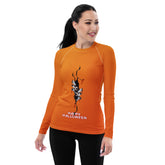
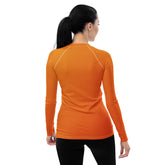

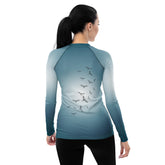

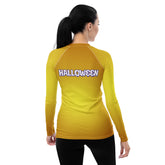
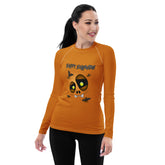
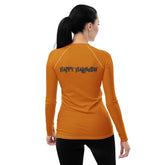

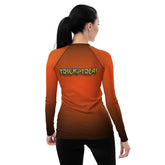
Leave a comment
Please note, comments need to be approved before they are published.